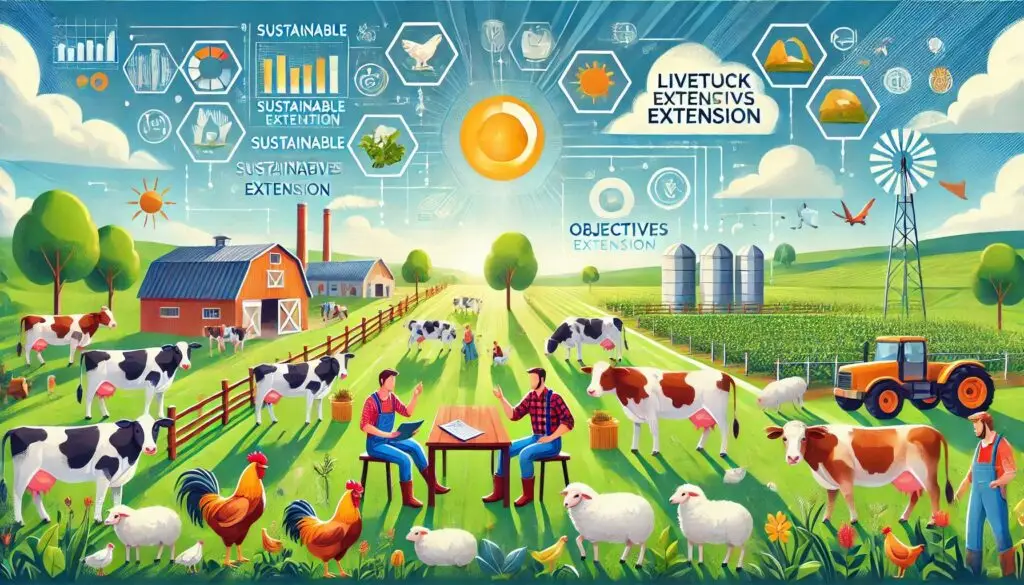Enhancing Livestock Extension Services for Sustainable Agriculture

Introduction to Livestock-Centric Agriculture
Livestock plays a crucial role in agriculture, contributing significantly to food security, rural livelihoods, and economic development. In many regions, particularly in developing countries, livestock serves as a primary source of income and nutrition. However, the effectiveness of livestock production is often hindered by inadequate extension services. This article delves into the concepts of livestock extension, its significance in agricultural systems, and strategies for enhancing these services.
Understanding Livestock Extension
What is Livestock Extension?
Livestock extension refers to the processes and practices aimed at improving the productivity and sustainability of livestock farming through education and support. It encompasses various activities that provide farmers with essential knowledge about animal health, nutrition, breeding, and overall management practices.
Importance of Livestock Extension
- Economic Development: Livestock extension supports economic growth by enhancing productivity and profitability for farmers.
- Food Security: By improving livestock management practices, extension services contribute to increased food production.
- Rural Livelihoods: Many rural families depend on livestock for their livelihoods. Effective extension services can improve their quality of life.
The Role of Livestock in Agriculture
Economic Contributions
The livestock sector is a significant contributor to the agricultural economy. It provides employment opportunities and generates income for millions of people worldwide. According to the Food and Agriculture Organization (FAO), the livestock sector is expected to play a pivotal role in agricultural growth over the coming decades (FAO).
Nutritional Value
Livestock products such as milk, meat, and eggs are vital sources of protein and essential nutrients. They contribute significantly to dietary diversity and food security in many communities.
Challenges Facing Livestock Extension Services
Despite its importance, livestock extension faces numerous challenges:
- Limited Resources: Many extension programs operate with insufficient funding, limiting their reach.
- Knowledge Gaps: Farmers often lack access to vital information on best practices in livestock management.
- Changing Agricultural Landscapes: Urbanization and shifts in farming practices complicate traditional livestock management methods.
Strategies for Enhancing Livestock Extension Services
Adopting a Participatory Approach
Engagement with Farmers
Involving farmers in the planning and implementation of extension programs ensures that their needs are met effectively. This participatory approach fosters collaboration between extension workers and farmers (WP Beginner).
Feedback Mechanisms
Establishing feedback mechanisms allows farmers to share their experiences and challenges with extension agents. This two-way communication enhances the relevance of extension services.
Tailored Training Programs
Targeted Education
Extension programs should be tailored to meet the specific needs of different groups within the livestock sector. For example, dairy farmers may require different training than poultry producers.
Use of Technology
Leveraging technology can enhance training delivery. Online platforms can provide access to resources and training materials for remote farmers (WordPress Support).
Strengthening Support Systems
Integrated Support Services
Farmers need integrated support that includes access to veterinary services, quality feed, and breeding materials. Collaboration between various service providers can improve overall support for livestock owners.
Decentralized Service Delivery
Decentralizing extension services ensures that they are more accessible to local farmers. Local extension agents can better understand regional challenges and provide relevant solutions (Elegant Themes).
The Future of Livestock Extension
Innovative Approaches
The future of livestock extension lies in adopting innovative approaches that leverage technology and foster collaboration among stakeholders. This includes:
- Utilizing mobile applications for information dissemination.
- Implementing community-based training programs.
- Encouraging partnerships between public and private sectors.
Policy Support
Effective policies are essential for strengthening livestock extension services. Policymakers must recognize the importance of these services in achieving agricultural growth and rural development (WordPress Codex).
Conclusion
Livestock-centric agriculture is vital for food security and rural livelihoods. Enhancing livestock extension services is crucial for improving productivity, sustainability, and farmer knowledge. By adopting participatory approaches, tailoring training programs, strengthening support systems, and fostering innovation, we can create a more robust framework for livestock extension that benefits all stakeholders involved.
More From Extension Education:
Sheep Development Programmes taken up in India






Your article helped me a lot, is there any more related content? Thanks! https://accounts.binance.com/ar-BH/register?ref=V2H9AFPY